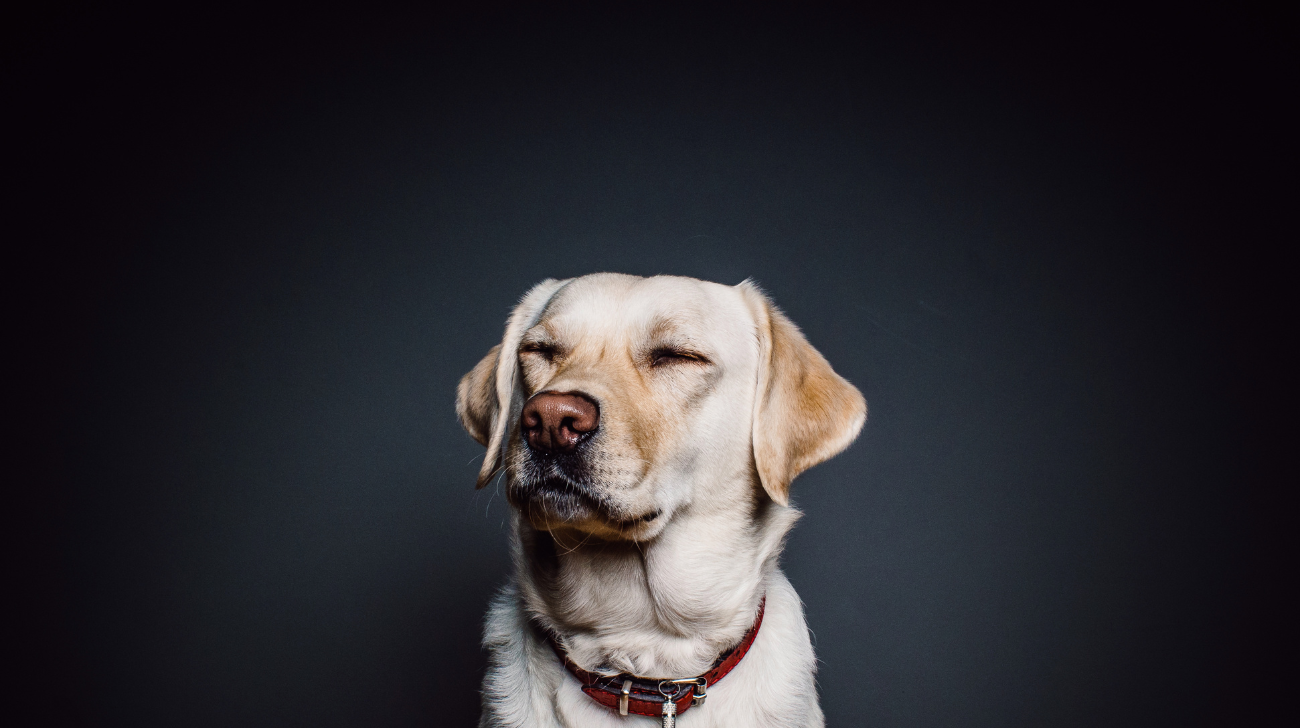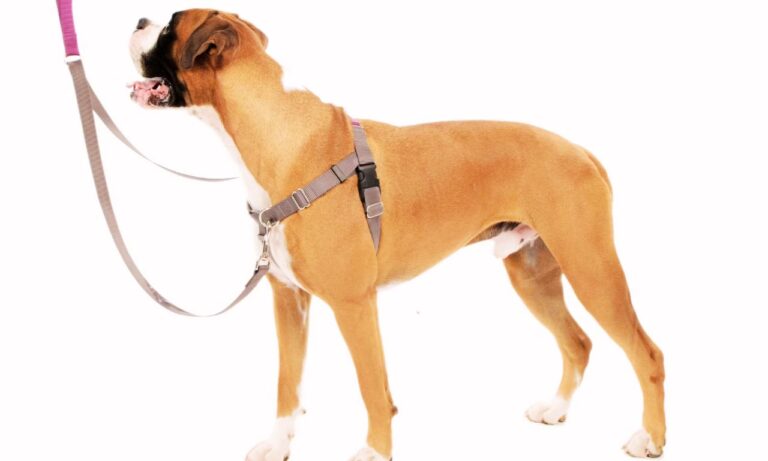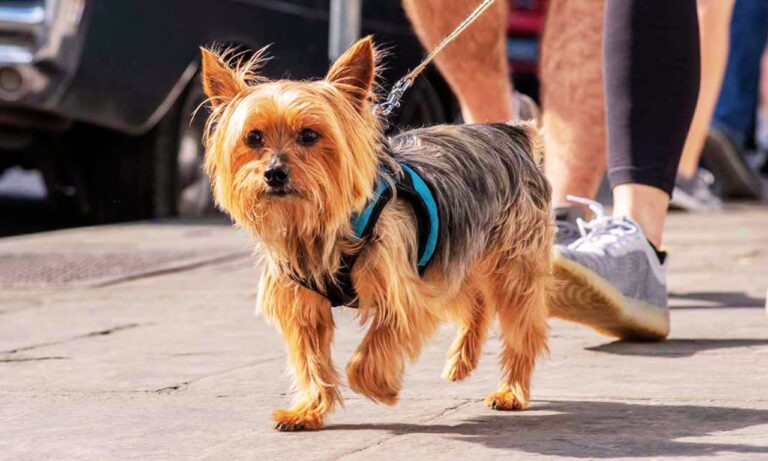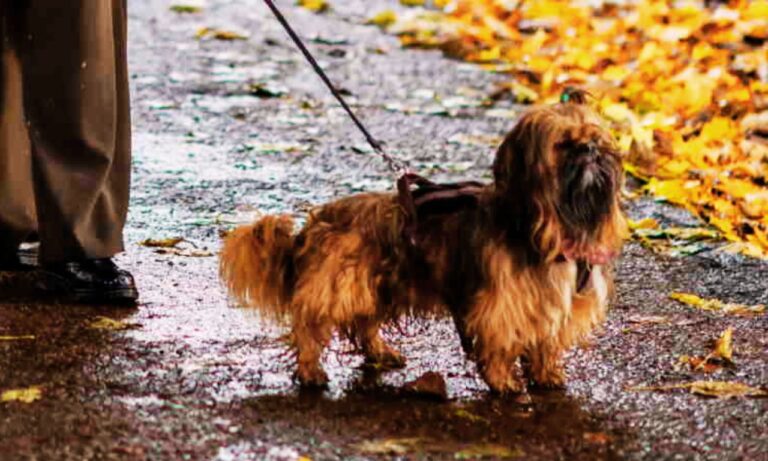Dogs with thick skin or dense fur, such as Mastiffs, Saint Bernards, or Huskies, often require special consideration when selecting and fitting a collar. These dogs’ thick skin and coat can make it more challenging to ensure the collar fits properly without causing discomfort or slipping off. So, how to put collar on thick skin dogs? Here’s a detailed guide on how to correctly place a collar on a thick-skinned dog, along with tips for selecting the right type of collar to ensure your dog’s comfort and safety. Discover the best collars for Siberian Huskies for both style and comfort.
Here’s a quick table for you to put a collar on thick-skinned dogs:
This table should help you quickly navigate the process!
Blog Highlights
ToggleChoosing the Right Collar for Thick-Skinned Dogs
The first step in ensuring a collar fits well on a thick-skinned dog is choosing the right type of collar. Dogs with dense coats and strong necks benefit from collars that can handle their size and strength without causing irritation. Here are some recommended types:

- Wide, Padded Collars: Wider collars distribute pressure more evenly across a dog’s neck, which is important for thicker-skinned breeds. Look for collars with soft padding to prevent chafing or discomfort.
- Leather Collars: Leather is a durable and comfortable option, as it softens with wear and reduces the chances of causing fur damage or skin irritation. Leather collars can also handle the wear and tear from larger dogs that pull on leashes.
- Martingale Collars: These collars, often called no-slip collars, are ideal for dogs with thicker necks as they tighten slightly when the dog pulls but are designed not to choke. This ensures that the collar won’t slip off while maintaining comfort for the dog.
Measuring the Dog’s Neck Correctly
Proper measurement is essential when fitting a collar for any dog, but it’s particularly important for thick-skinned dogs. Here’s how to measure effectively:
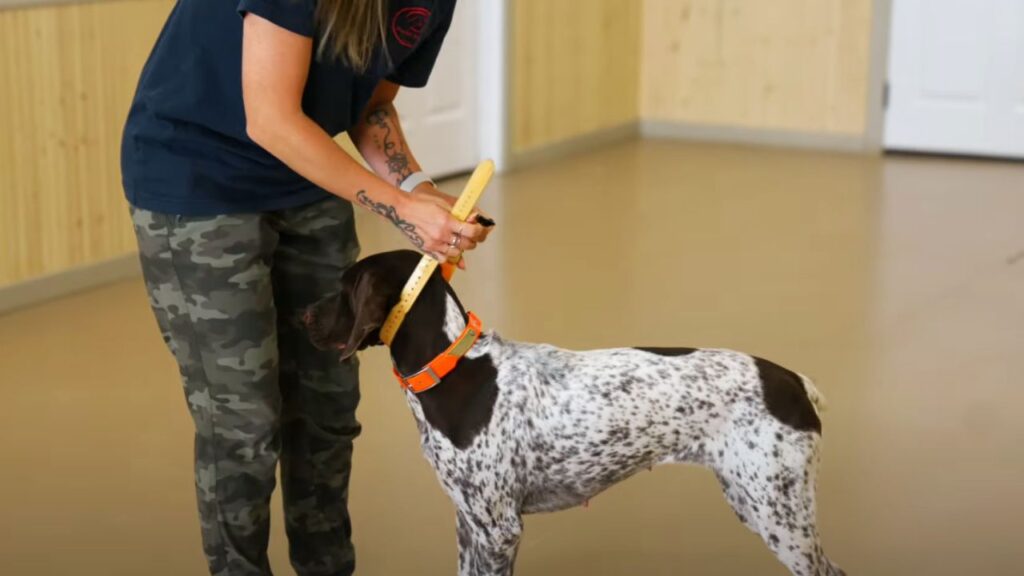
- Use a flexible measuring tape and wrap it around the thickest part of your dog’s neck, typically just below the ears for thick-skinned breeds. Make sure to measure tightly enough so the collar won’t slip, but leave enough room to ensure comfort.
- After you have the neck measurement, add about two inches to account for adjustments. For most dogs, you should be able to slide two fingers between the collar and their neck. This ensures that the collar is snug but not too tight.
How To Put Collar on Thick Skin Dogs: Step-by-Step
Once you’ve selected the appropriate collar and measured your dog’s neck, follow these steps to properly fit the collar, here’s how to put collar on thick skin dogs:

- Introduce the Collar Gradually: Dogs with thick skin might be more resistant to wearing a collar, especially if it’s new or feels restrictive. Gradually introduce the collar by letting your dog sniff and investigate it. You can reward them with treats to create a positive association.
- Positioning the Collar: Place the collar high on the neck, just below the ears, as this is the strongest part of the neck. If your dog has a thick coat, gently press down the fur to ensure the collar sits close to the skin. This is especially important for thick-furred dogs, as a loose fit can cause the collar to move around too much.
- Secure the Fit: After positioning, secure the collar and check the fit using the two-finger rule—slide two fingers between the collar and the dog’s neck to ensure it’s snug but not too tight. If your dog has a particularly dense coat, make sure the collar isn’t overly tight when compressing the fur, as this could cause discomfort or restrict breathing.
Addressing Challenges Specific to Thick-Skinned Breeds
Dogs with thick skin often pose unique challenges when fitting a collar. Here are some solutions to common issues:
- Fur Bunching or Discomfort: If your dog’s fur bunches under the collar, consider using a rolled leather or padded collar to minimize friction. The goal is to reduce the chance of rubbing or irritation, which can lead to hot spots, especially if the collar moves around too much.
- Escaping from Collars: Some dogs with muscular necks can slip out of their collars if they aren’t tight enough. In this case, a Martingale collar can help prevent escape by tightening slightly when the dog pulls, but it won’t choke the dog.
- Collar Resisting: If your dog resists wearing a collar, especially for the first time, patience and positive reinforcement are key. Let the dog wear the collar for short periods at first, and reward them frequently with treats and praise. Over time, increase the duration they wear it.
Choosing the Correct Material
Selecting the right material is crucial for ensuring your thick-skinned dog is comfortable wearing their collar. Here are common materials and their benefits:

- Nylon: While lightweight and inexpensive, nylon collars may not be as comfortable for dogs with dense fur, as they can cause tangling or matting. However, they are durable and suitable for dogs that enjoy water activities.
- Leather: Leather collars are a popular choice for thick-skinned dogs because of their durability and comfort. They soften with use, making them gentle on the skin, and are less likely to cause chafing compared to nylon.
- Neoprene: Neoprene, used in wetsuits, is a good option for dogs that spend time outdoors in wet conditions. It resists dirt and moisture, making it ideal for dogs with thick fur that tends to trap debris. Learn how to put a collar on a Husky with these practical tips.
Regular Collar Checks and Maintenance
For thick-skinned dogs, regularly checking the collar for signs of wear and tear is important. Over time, even high-quality collars can break down, which can affect their fit and comfort. Make it a habit to:
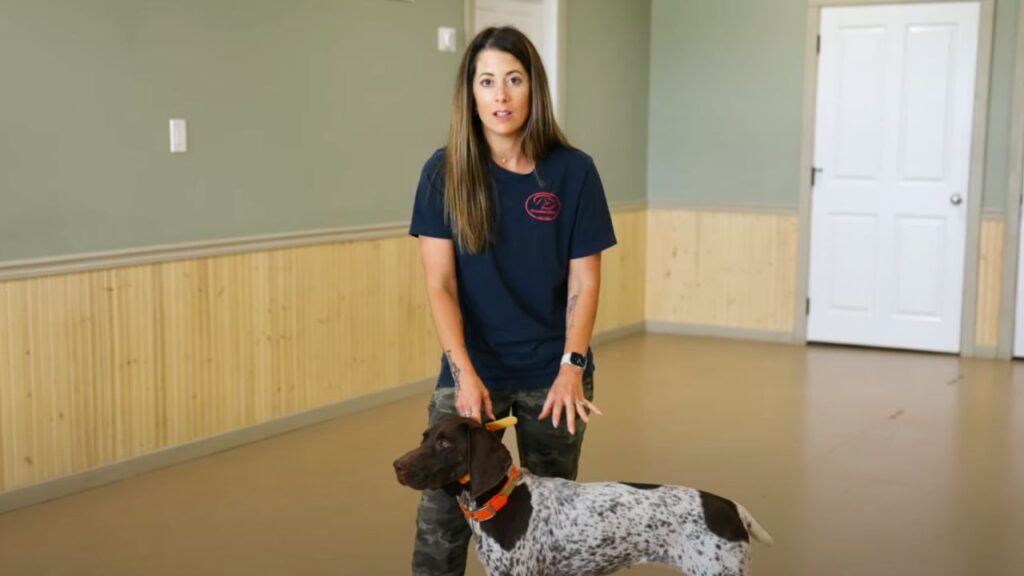
- Check for Skin Irritation: Thick-skinned dogs may develop hot spots or sores if their collar rubs against their skin too much. Look for any signs of redness, fur loss, or irritation under the collar.
- Inspect the Collar’s Condition: Look for any signs of fraying or damage to the collar. A damaged collar is more likely to break, so replace it as needed to ensure your dog’s safety.
When to Remove the Collar of Thick-Skinned Dogs
For dogs with thick skin, collar maintenance and proper timing for removal are crucial for their health and comfort. Knowing when to remove a collar can prevent potential issues such as skin irritation, infection, and discomfort. Here’s a comprehensive guide on the signs and situations when you should consider removing the collar of a thick-skinned dog.
1. Skin Irritation and Discomfort
One of the primary reasons to remove a collar is if you notice any signs of skin irritation. Thick-skinned dogs may still be susceptible to chafing and irritation from a collar that is too tight or poorly fitted. Watch for:
- Redness or Rash: Look for areas of redness, rash, or swelling where the collar rests. This could indicate that the collar is causing friction or pressure.
- Scratching or Biting: If the dog is frequently scratching or biting at the collar area, it might be causing discomfort. In such cases, removing the collar can help alleviate the irritation.
- Hair Loss: Persistent irritation can lead to hair loss around the collar area. If you notice thinning or loss of hair, it may be a sign that the collar needs to be adjusted or removed.
2. Signs of Infection
Collar-induced infections can occur if moisture or debris gets trapped under the collar. Thick-skinned dogs are not immune to infections, so be vigilant for:
- Unpleasant Odor: An unusual or foul smell from the collar area could indicate an infection. In such cases, remove the collar and consult a veterinarian.
- Discharge or Oozing: Any discharge, pus, or oozing from the collar area is a clear sign of infection. Remove the collar immediately and seek veterinary care.
- Increased Swelling: Swelling around the collar area can be a sign of infection or an allergic reaction. Removing the collar and getting veterinary advice is essential.
3. Growth or Weight Changes
As dogs grow or change weight, their collar might no longer fit properly. For thick-skinned dogs, this can be more pronounced due to the additional layers of skin. Regularly check for:
- Fit Adjustments: If the collar is too tight or too loose, it may cause discomfort or may not stay securely in place. Adjust the collar as needed or remove it if it doesn’t fit properly.
- Growth Spurts: Puppies or growing dogs may outgrow their collars quickly. Frequent checks are necessary to ensure the collar continues to fit correctly and comfortably.
4. During Bathing or Swimming
Collars can trap moisture and soap, which might lead to skin issues or an unpleasant odor. For thorough cleaning and to prevent skin problems:
- Remove During Baths: Take off the collar when bathing your dog to ensure that soap and water don’t get trapped underneath. This also allows you to clean the collar itself.
- Avoid Water Exposure: If your dog swims or plays in water frequently, it’s wise to remove the collar to prevent it from becoming soaked and potentially causing skin irritation. Find out the best collars for Cane Corsos to suit their unique needs.
5. When Using Flea or Tick Treatments
If your dog is receiving flea or tick treatments, the collar might interfere with the application or absorb some of the treatment. To ensure effectiveness and avoid complications:
- Remove During Treatment: Take off the collar when applying topical treatments. This ensures that the medication reaches the skin and is not absorbed by the collar.
- Reapply Collar After Treatment: Once the treatment has dried and absorbed, you can put the collar back on. Make sure it is properly cleaned if it got any medication on it.
6. Regular Checks and Maintenance
Routine checks are essential to ensure the collar remains comfortable and effective. For thick-skinned dogs, you should:
- Inspect Frequently: Regularly check the collar for wear and tear, and ensure it’s not too tight or causing any issues. Adjust or remove it if needed.
- Clean the Collar: Regularly clean the collar to prevent the buildup of dirt, debris, or bacteria, which can contribute to skin problems. Explore the Cane Corso growth and weight chart and nutrition plans.
Wrapping Up!
Fitting a collar on a thick-skinned dog requires careful consideration of the collar type, proper measurement, and regular monitoring. By choosing the right collar and following a systematic approach to fitting, you can ensure that your dog is both comfortable and secure while wearing it.
Always prioritize comfort and safety, and if you encounter any issues, consider trying different collar styles or seeking advice from a veterinarian or dog trainer. Hope so, now you know how to put collar on thick skin dogs. Understand if the Cane Corso is a high-maintenance dog with this insightful guide.

